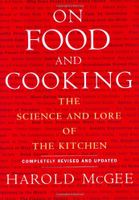The Unpredictability of Fish Quality
By Harold McGee
Published 2004
The quality of many fish and shellfish can vary drastically from season to season. This is because they live out life cycles that typically include one phase during which they grow and mature, accumulating energy reserves and reaching their peak of culinary quality, and a subsequent phase during which they expend those reserves to migrate and create masses of eggs or sperm for the next generation. And most fish don’t store their reserves in layers of fat, as land animals do. Instead they use the proteins of their muscle mass as their energy pack. During migrations and spawning, they accumulate protein-digesting enzymes in their muscle and literally transform their own flesh into the next generation. Then and afterward, their muscle is meager and spent, and makes a spongy, mushy dish.
Become a Premium Member to access this page
Unlimited, ad-free access to hundreds of the world’s best cookbooks
Over 160,000 recipes with thousands more added every month
Recommended by leading chefs and food writers
Powerful search filters to match your tastes
Create collections and add reviews or private notes to any recipe
Swipe to browse each cookbook from cover-to-cover
Manage your subscription via the My Membership page
Monthly plan
Annual plan
Part of
Advertisement
Related Recipes
-
-
-
-
Related Reference
-
-
-
-
Advertisement



